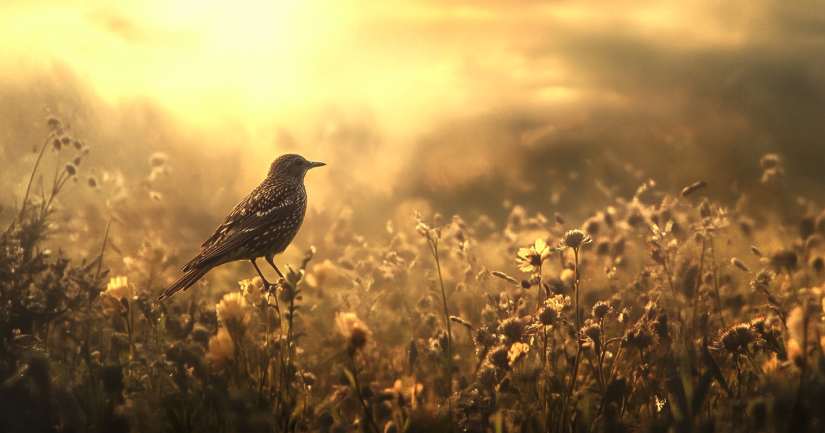
Discover your true potential with the Lark Quiz, How Well Do You Know These Melodious Songbirds? Larks are celebrated for their beautiful songs and remarkable flying abilities. This Lark Quiz will test your knowledge of these small but fascinating birds, known for their elaborate melodies and impressive aerial displays. Found across a wide range of habitats, larks have adapted to grasslands, deserts, and even urban environments, making them one of the most widespread bird families.
Larks belong to the Alaudidae family, which includes over 90 species found across Europe, Africa, Asia, and Australia. They are best known for their complex vocalizations, with some species capable of producing long, intricate songs that can last for minutes at a time. These birds often sing while in flight, performing stunning aerial displays to attract mates and defend territories.
Intrigued by larks? There’s more to discover! Explore the elusive Kiwi Quiz or learn about the goose’s unique grace with the Goose Quiz.
Let’s Begin – Explore the Lark Quiz Below
What Makes Larks Unique? Key Facts for the Lark Quiz
Unlike many songbirds, larks are ground dwellers, preferring to nest and forage in open landscapes. Their cryptic brown, tan, or streaked plumage helps them blend into dry grasslands and sandy deserts, providing excellent camouflage from predators. The skylark, one of the most famous lark species, can rise over 100 meters (330 feet) into the air, singing continuously as it hovers above its territory.
Where Do Larks Live? Exploring Their Habitats and Adaptations
Larks thrive in grasslands, savannas, steppes, and arid regions, where their specialized feeding habits allow them to survive in harsh environments. They primarily eat seeds and insects, adjusting their diet based on seasonal availability. Some species, like the Horned lark, are highly adaptable and can withstand extreme climates, from freezing tundras to scorching deserts.
Despite their preference for open landscapes, certain lark species have adapted to human-modified environments, including agricultural fields and roadsides. Their ability to blend into different surroundings has made them one of the most resilient bird families. However, habitat loss and modern farming practices have led to population declines in some species, particularly in Europe and North America.
How Do Larks Communicate? The Power of Song and Flight Displays
One of the defining characteristics of larks is their incredible vocal ability. Male larks use loud, continuous songs to establish territories and attract mates, often singing from elevated perches or while soaring in mid-air. These songs can include hundreds of distinct notes, making larks some of the most accomplished avian vocalists.
The skylark is famous for its long, high-altitude song flights, during which it can stay airborne for up to 10 minutes, filling the sky with a cascade of melodies. In contrast, species like the crested lark prefer singing from the ground or low branches. Regardless of the method, their songs play a crucial role in communication and social bonding.
Are Larks in Danger? Conservation Challenges and Efforts
While larks remain widespread, several species face population declines due to habitat destruction, agricultural expansion, and climate change. Intensive farming practices have reduced the availability of grasslands and natural nesting sites, forcing many larks to adapt to less suitable environments.
In Europe, the Eurasian skylark has seen declines due to changes in farming techniques that reduce insect populations and seed availability. Conservation efforts focus on restoring grasslands, promoting bird-friendly agriculture, and protecting key breeding sites to support lark populations. Organizations are also working to raise awareness of the importance of open landscapes for maintaining healthy bird populations.
Are You Ready to Take the Lark Quiz?
Now that you’ve explored the world of larks, it’s time to test your knowledge! This Lark Quiz will challenge you with fascinating questions about their behavior, habitats, and remarkable songs. See how much you know about these musical marvels of the bird world!
Check out our FULL collection of Bird Quizzes!
Lark – FAQ
A lark is a small to medium-sized songbird belonging to the family Alaudidae. These birds are often recognized for their melodious songs, which they typically perform while in flight. Unlike many other bird species, larks have a distinctive robust body shape and a short, thick bill, which aids them in foraging for seeds and insects in open habitats such as grasslands and fields.
Larks predominantly inhabit open areas, including grasslands, savannas, and agricultural fields. They thrive in regions with sparse vegetation, which allows them to forage effectively for seeds and insects. Some species are also adapted to arid environments, where they can find shelter in sparse grass or scrub.
Larks are known for their complex vocalizations. Their songs serve various purposes, such as attracting mates, defending territories, and signaling alarm to other larks. The songs can vary significantly between species and may include a series of melodious notes, trills, and even mimicry of other bird calls.
Larks face numerous threats, primarily due to habitat loss caused by agricultural expansion and urban development. Pesticide use also poses a significant risk, as it reduces their food sources and can lead to direct mortality. Additionally, climate change is altering their habitats and migration patterns, further endangering some species. Conservation efforts are essential to ensure the survival of these melodious birds.
